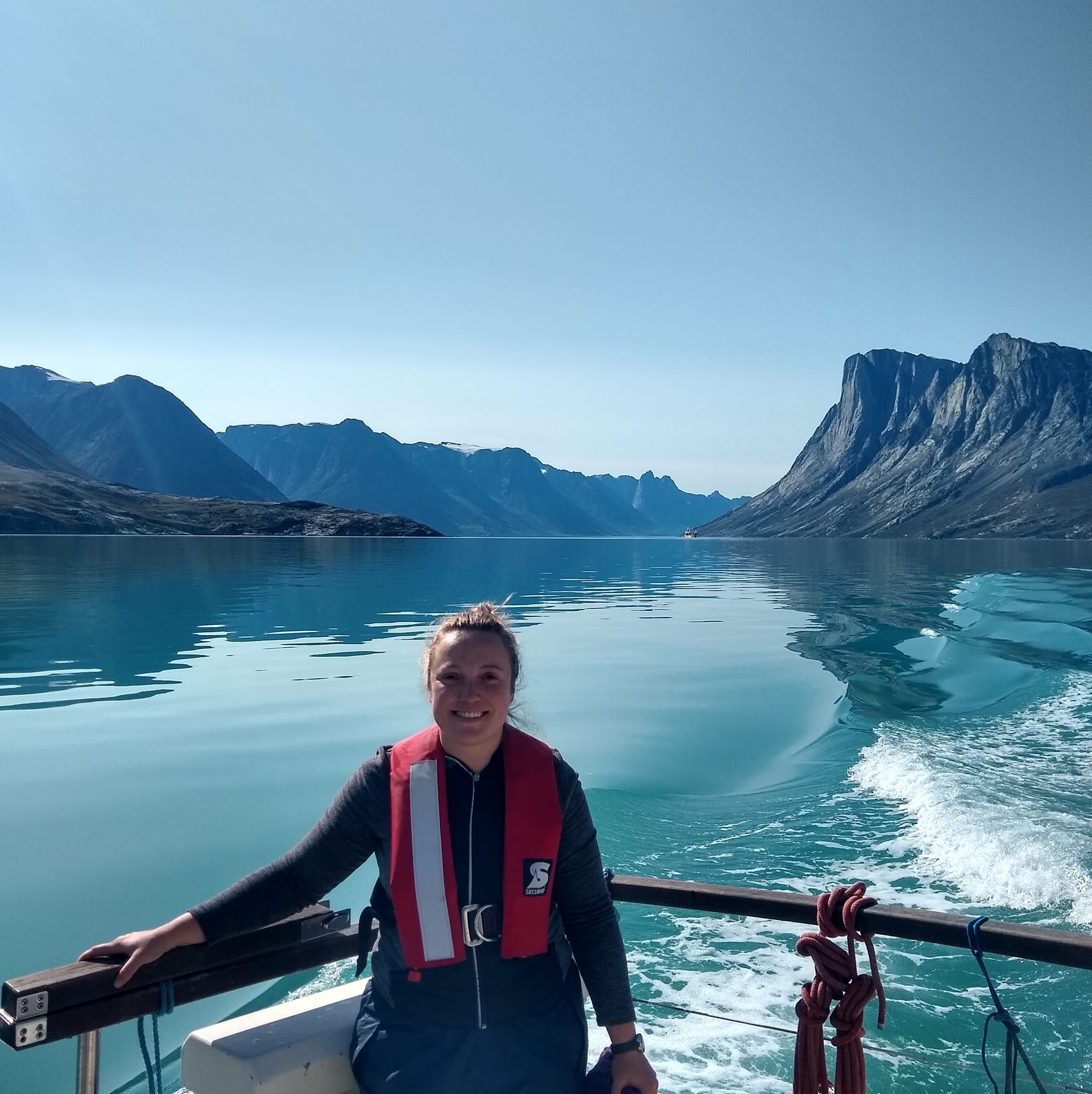 With the increased melting of Greenland’s ice-sheet there is an inevitable growth in the quantity of freshwater flowing into and through Arctic fjord systems. These systems are the mixing ground of glacier and terrestrial-derived water with Arctic Ocean water, and thus form a dynamic environment for research. My interests lie in understanding how the big processes, like glacier melt and ocean water into fjords, come together to impact the most microscopic of organisms; the phytoplankton. I’m especially curious as to how the nutrients associated with the processes play out in the phytoplankton realm. Are there enough to support a large spring bloom? Is there an imbalance in the critical elements of nitrogen, phosphorus and carbon? How do both of these factors impact the phytoplankton as a “crop” at the base of the food web and is it declining or increasing? These questions direct the work I am currently conducting in the Arctic.
With the increased melting of Greenland’s ice-sheet there is an inevitable growth in the quantity of freshwater flowing into and through Arctic fjord systems. These systems are the mixing ground of glacier and terrestrial-derived water with Arctic Ocean water, and thus form a dynamic environment for research. My interests lie in understanding how the big processes, like glacier melt and ocean water into fjords, come together to impact the most microscopic of organisms; the phytoplankton. I’m especially curious as to how the nutrients associated with the processes play out in the phytoplankton realm. Are there enough to support a large spring bloom? Is there an imbalance in the critical elements of nitrogen, phosphorus and carbon? How do both of these factors impact the phytoplankton as a “crop” at the base of the food web and is it declining or increasing? These questions direct the work I am currently conducting in the Arctic.
You might ask, but so what if there’s more or less green stuff? Well, naturally it is not simple. First, there are thousands of species and they are not all equally beneficial. Some are far too small to be sustainably grazed by larger organisms; others produce toxins, while some have spines. Even if you get the ‘Goldie Locks’ of phytoplankton size and shape the ingredients list might be subpar. Phytoplankton, as a group, are incredible survivors and can “make-do” and grow in a broad range of nutrient ratios. However, that doesn’t mean they make for a good balance of key elements for higher trophic levels.
Before we can know if more potential ice-sheet meltwater is a good or bad thing for fjord phytoplankton, we need to find out what is happening now. So, I’ve started to take a look at the Kangerlussuaq fjord from top to tail. I’m collecting phytoplankton samples from several stations along the fjord and counting, identifying and analysing them to understand who is there and how healthy are they. I’m growing them in different media to see if they were lacking anything in the field. And I’m culturing them to do more experiments on their carbon uptake to see if, by chance, they are increasing, will that also mean they might be taking up a bit more carbon as well?
I also hope to tackle these many questions with the connections, ideas and support I can gain within the IASC community. Arctic fjords represent an intersection of the cryosphere, terrestrial as well as marine environment and collectively experts in each can start to unravel the questions about these dynamic systems. Being an IASC fellow gives me the unique opportunity to be in easy contact with top researchers in all of these fields. All I can say is watch this space, maybe even through a microscope!
Contact me!
Email: Amanda.Burson@nottingham.ac.uk, Twitter: @AmandaMerle1
Photo: Amanda Burson on the Kangerlussuaq fjord. Credit: Suzanne McGowan
IASC Fellowship Program
The IASC Fellowship Program is meant to engage Early Career Scientists (ECS) in the work of the IASC Working Groups (WGs). IASC Fellows are doctoral or postdoctoral researchers who actively participate in selected activities of the IASC WGs. The total duration of the IASC Fellowship Program is 1+2 years. After the first year the Fellows have an opportunity to stay involved up to 2 more years. The further involvement is individually decided by the WG Steering Group and the Fellow.
From 2020, following the recommendations of the IASC Action Group on Indigenous Involvement (AGII), IASC welcomed also two indigenous Fellows (Inaugural Fellows announced on 27 April 2020). IASC has had Indigenous Fellows before, but this new recommendation (and budget line!) means that there will be at least one every year, as an additional sixth Fellow appointed each year. They will be able to choose whichever IASC Working Group is most of interest and relevance to them.
The IASC fellowship Program opens for new candidates every year around late September and is due mid-November. The call and the selection is held in collaboration with APECS.
For more information click here or contact the IASC Fellowship Coordinator Alevtina Evgrafova.
